
How would you answer the question “Is waist training body dysmorphia?” Would you say yes or would you say no?
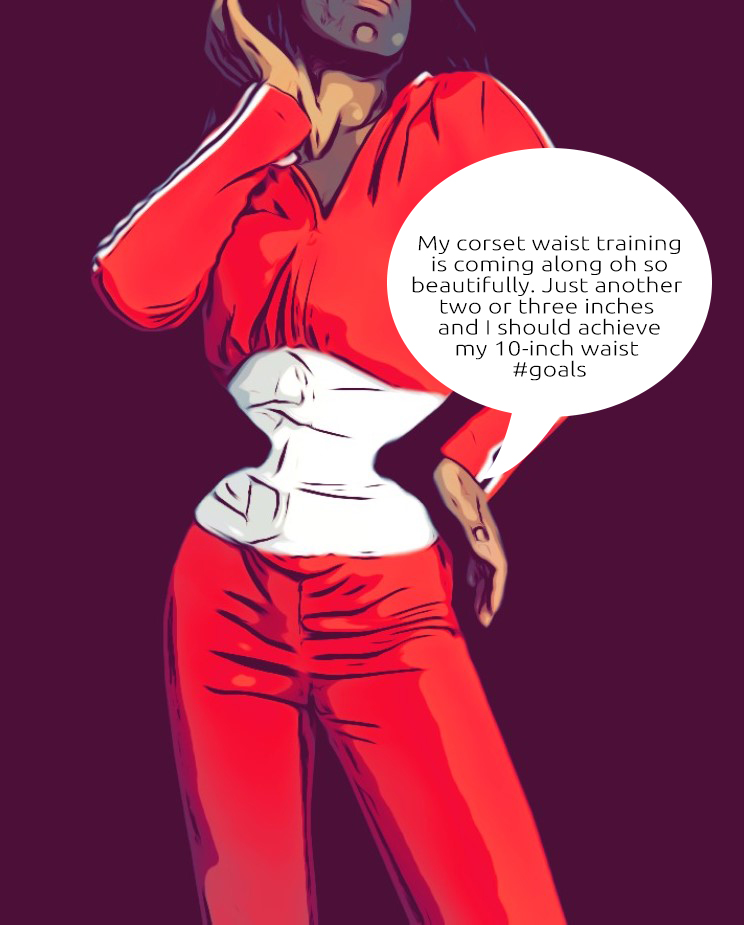
Waist training has become quite popular in recent years, but it isn’t a new practice. Wearing corsets for the purpose of achieving the appearance of having an hourglass figure or for the purpose of actually reducing the measurement of your waistline to something that is several inches smaller than your actual waist measurement dates back as far as before the 16th century (according to Wikipedia).
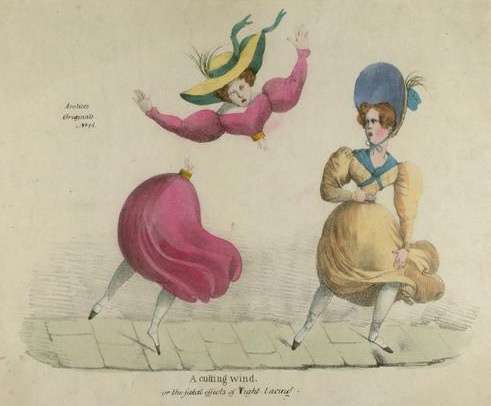
And because the use of corsets to achieve this hourglass figure has so much history behind it, and also because the culture of beauty continues to persist unchecked and unchallenged, it seems as if waist training body dysmorphia conversations are not getting nearly the amount of attention they deserve. Or do they deserve any attention at all? Is it that they are not getting attention because the suggestion of a waist training body dysmorphia is a reach by people who like to label everything that other people do and attach some type of psychological disorder to anything that suggests a person has a preference of one appearance over another and is exercising the freedom and right to do with their own body whatever they choose for the purpose of achieving their preferred look?
The video above features Cathie Jung who holds the Guiness Book record (as of the date of the video) for the smallest waist on a living person. Her waist measures between 15 – 18 inches. She has been using corsets to shrink her waist for 35 years (based on the date of the video) Prior to corset shrinking her waist measured 26 inches. Her husband Bob, a physician, loves her small waist. In the video you can hear him saying:
“I like the appearance and I like the feel of a small waist. It’s always been more attractive.”
But is there a point at which a small waist becomes just a wee little bit too small? Or maybe more than a wee little bit? And what about the husband angle? Is it okay that a woman’s husband would encourage her to go to such lengths to change her body because he himself has a preference for a small waist? Is it some form of abuse, particularly if the husband’s stated preference motivates the wife’s corset training (not saying that to be the case with the Jungs)? To listen to Cathie Jung and to watch the couple interact in the video, they appear to be perfectly content. Cathie has a 15 inch waist, which makes her happy.
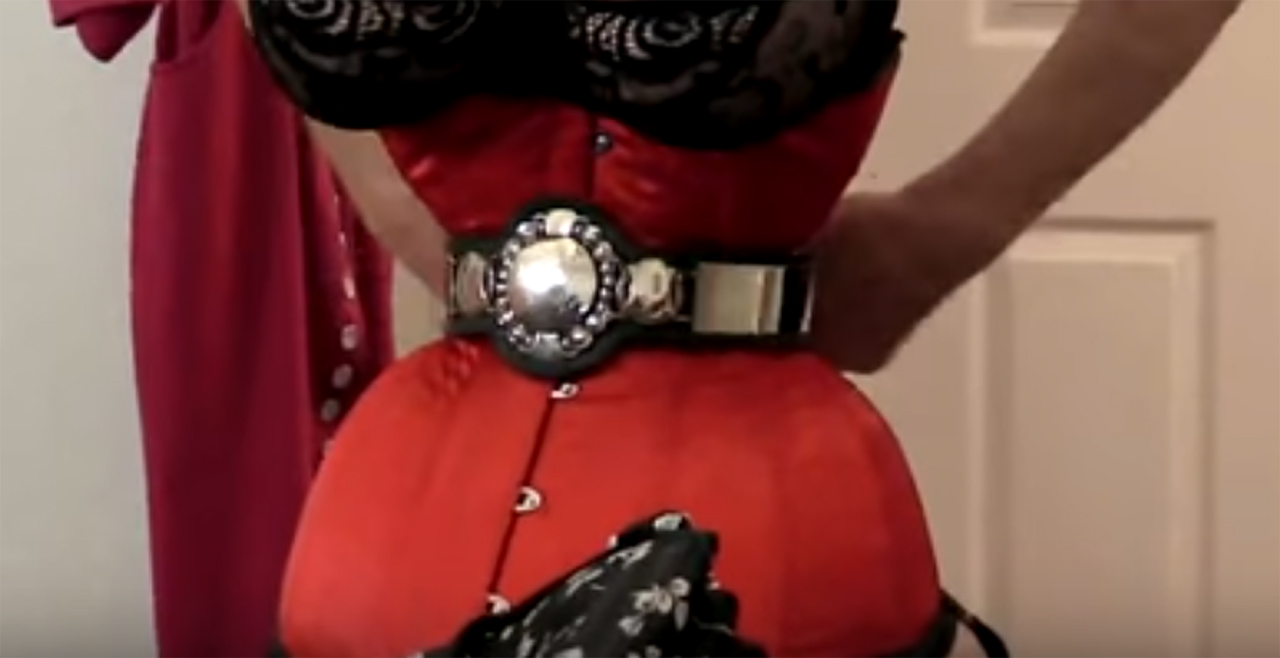
And Bob gets to close his hands around her teeny tiny waist which makes him happy so, where is the problem?

But, should the suggestion of a waist training body dysmorphia be treated with disdain and disregard?
Body dysmorphic disorder (BDD) is described on the Anxiety and Depression Association of America website as “a body-image disorder characterized by persistent and intrusive preoccupations with an imagined or slight defect in one’s appearance.” By that definition, can you call corset waist training body dysmorphia? If a woman decides she wants an hourglass figure and decides to use a corset to try to achieve this figure, is this evidence of a persistent and intrusive preoccupation with an imagined or slight defect in her appearance? It’s really dependent upon the specific case. Is this a woman who has a history of being depressed about her figure, complaining obsessively about not having curves and giving all indications of not loving herself because she hates her figure. If so, it could be argued that her corset waist training is an example of body dysmorphia because it stems from depression about her figure and an obsession with wanting to be curvier.
Some people simply choose to corset waist train because they want a smaller waist in as little time as possible
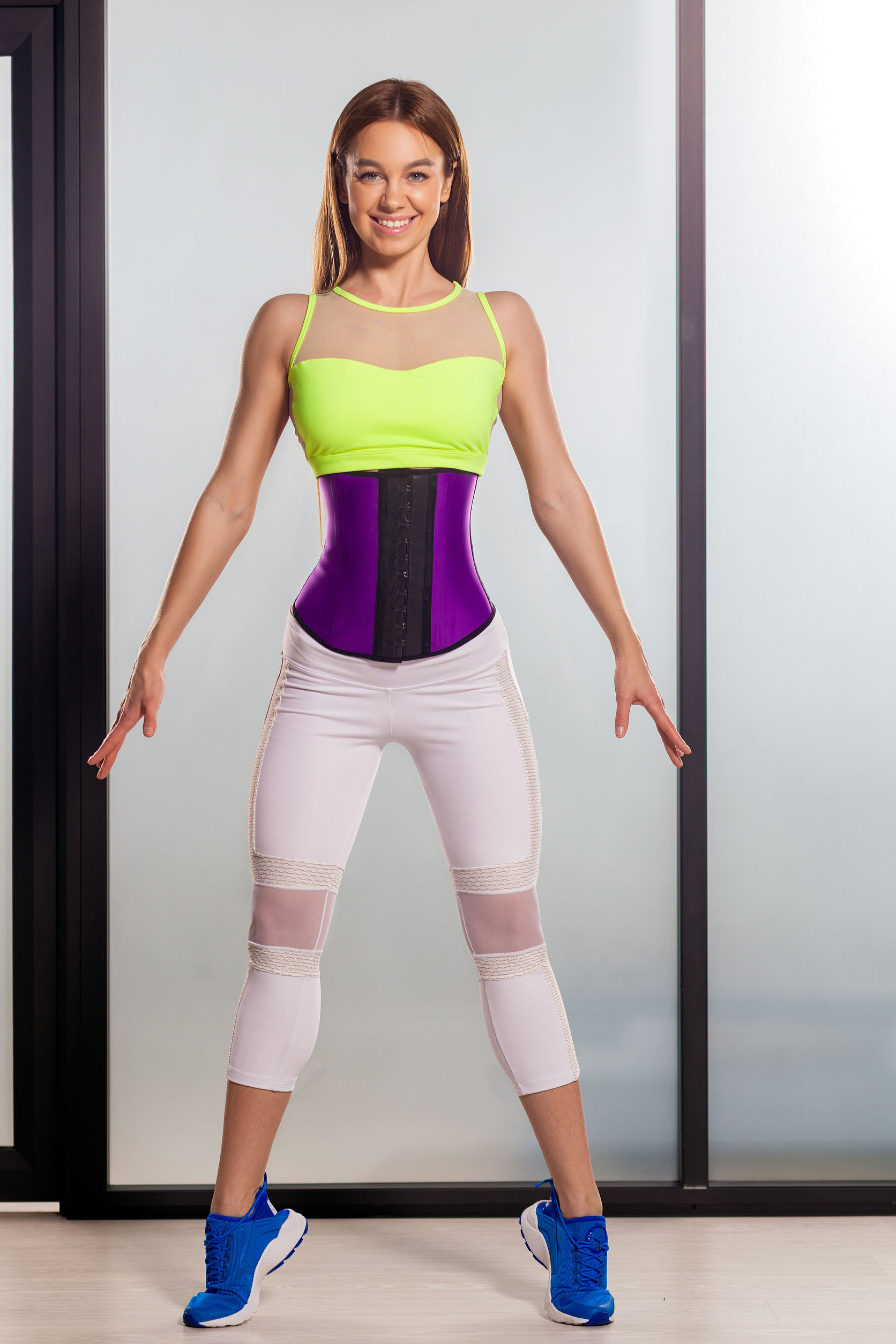
No one is going to accuse you of having body dysmorphic disorder for doing waist exercises in the hope of taking an inch or two off your waistline. For some women, corset waist training is nothing more than a means by which to do the same thing that other women are doing without the corset–trying to get a smaller waist. It isn’t that they think there’s something wrong with their figure. They don’t necessarily suffer from an inability to accept and love themselves the way they are shaped. They’re not depressed or lacking self confidence. They are simply exercising their right to do with their body whatever they choose. They like the look of an hourglass figure and they’ve discovered thanks to Kim Kardashian, that even if you weren’t born with such a figure, you can, supposedly, achieve one by strapping on a corset and using it as exercise gear for the purpose of whittling down your waist as many inches as you desire. Many of these women simply want a smaller waist and are using corsets to facilitate the process. It’s as much to them a waist shrinking device as any other product on the market that is indicated for use in trimming the waistline. So if you’re going to call it body dysmorphia when these particular women use corsets to make their waist smaller, you’re going to have to call it body dysmorphia when any woman does any exercise or uses any product that is designed to make her waist smaller. The method can’t matter where that is the only difference from one woman to the next. If one woman does her waist exercises without a corset and the other does the same waist exercises with a corset, and the goal for both is the same–to cut a few inches off their waist line, how can you argue that one has body dysmorphia because she’s wearing a corset, and the other is perfectly healthy and normal?
Let’s be honest. There isn’t really a difference in doing regular waist shrinking exercises hoping to achieve a smaller waist and wearing a corset hoping for the same achievement.

This is just my opinion and I am sure there are many people who will disagree. But I don’t believe it makes a difference how you get a smaller waist. In terms of safety, it probably does make some difference if you are abusing corsets and other such waist trainers, but when it comes to the question of waist training body dysmorphia, it doesn’t really matter if you achieved an 18 inch waist via corseting, or you achieved an 18 inch waist doing exercises that target your waistline with your primary goal being to shrink your waist down to 18 inches. In either scenario, the same question applies. Why did you feel like you needed an 18-inch waist? What was wrong with your body before you managed to change the shape of it by shrinking your waist down to 18 inches? And that is where the body dysmorphia angle comes into the equation.
Wearing corsets to try to alter the shape of your body because you think that you’re not good enough unless you have curves and a smaller waist, surely that can be argued to be evidence of waist training body dysmorphia?
A woman’s body is her own, and what she chooses to do with it is nobody’s business. But body dysmorphic disorder can result in illnesses that can lead to death. So, while it’s a woman’s right to do whatever it is she wants to do with her own body, discussing some of the risks of corset waist training can be useful for educating those women who get into it from a place of low self esteem. When you have low self esteem you are sometimes at increased risk for going to extreme levels to try to fix all that you perceive to be wrong with yourself. And because you have a warped view of your body, you don’t necessarily have the ability to judge when you have gone far enough.
A quick Google search on the “dangers of corset training”:
What are the dangers of waist training?
-
Waist trainers can harm your organs. Studies going back to 20th century found that wearing corsets long term actually misplaced your organs and could cause permanent damage. …
-
Waist trainers can cause atrophy of abdominal muscles. …
-
Waist trainers can cause dehydration. (read more here)
It’s not my place to suggest that wanting a 13-inch waist is an indication of a problem.
In the pictures below of Ethel Granger, the woman who holds the Guiness Book of World Records distinction (as of this writing) for the smallest waist ever, she hardly looks like someone who is suffering from a lack of self confidence. She looks rather happy and proud of her 13 inch waist.

Ethel apparently began her corset training to please her husband. He had a fetish. You can read a little about it in this Vogue Italia article from 2011. But should there not have been a point during Ethel’s corset training years when both she and her husband were satisfied that her waist was small enough. I’m sure most healthy newborns have a mid-section that measures more than 13 inches when they come out of the womb. Why wasn’t Ethel satisfied with an 18 inch waist? An 18 inch waist is a pretty small waist.
This mom who was featured in an Inside Edition show has an 18 inch waist.

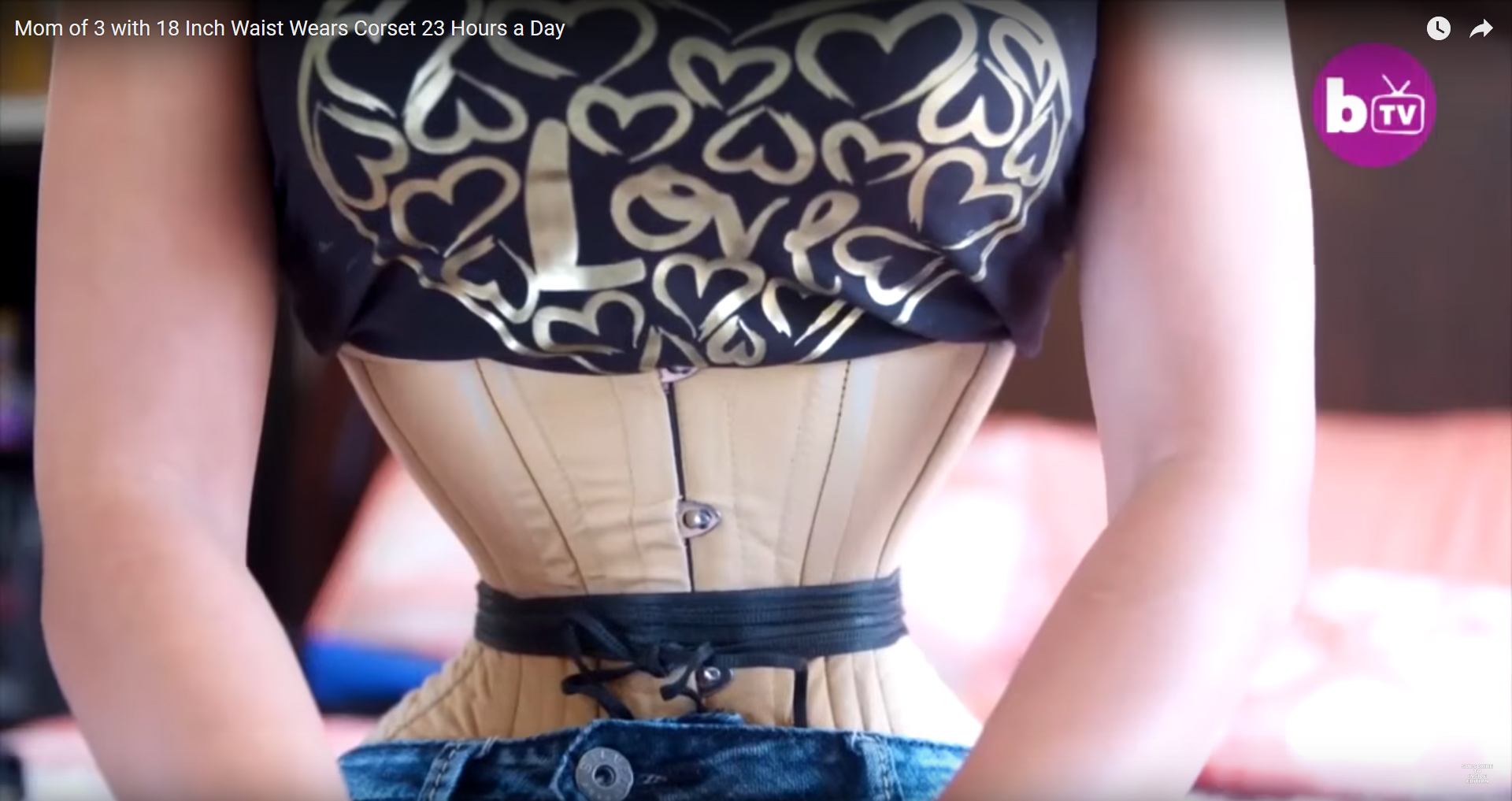
On someone smaller an 18 inch waist might not look necessarily all that tiny; but as you can see from the above pictures, an 18 inch waist is kind of ridiculously small. So imagine how absurdly silly a 13 inch waist must look. No disrespect to the lady in the pictures. She’s happy with her appearance and frankly that is the only thing that matters. I’m not judging her choice because it’s not for me to tell anyone what is okay and not okay to do with their body. And because I think the look is not for me doesn’t mean I should think I have the right to impose my view on someone else and tell them the look is not right for them. It’s her body and she’s happy with it this way, and I applaud her for living her life the way she wants to live it, doing what makes her happy and not concerning herself with what anyone thinks.
But seriously though, unless this is how you are shaped naturally–unless you naturally have an 18-inch waist, there’s no reason that you have to constrict yourself for nearly 24 hours per day every day for the rest of your life just to be able to say that when you wrap a measuring tape around your waist, it reads 18 inches instead of 26.
At the end of the day, to each his own. We’re all part of this culture. We’re all guilty in some way of contributing to the endurance of the ideas about human appearance that make people do all the things they do trying to change one thing or another about themselves. These women would not have gotten the idea in their head that a tiny waist would make them happy, without the idea existing in the first place. The idea is out there, and millions of women believe it. That’s why we’re all exercising trying to mold and sculpt our bodies into what we’re told our bodies should ideally look. Most of us consciously try to make our waist smaller as part of our workout goals. If I pretended that I didn’t have a bit of waist obsession myself you would only have to look at some of my pictures and it would be obvious.

I have a small waist. I don’t have a distraction with the idea of it being smaller. But I do measure it regularly to make sure it’s not getting bigger. And I admit to being curious about corsets, not for the purpose of waist training, but to wear for the purpose of bringing out my curves which are often impossible to see unless I cinch my waist. But why though, why does it matter? What difference does it make if we have curves or not? Why are we continuing to keep these beauty myths going by our active participation? I guess because, at the end of the day, our choice not to participate won’t change the culture. And in the meantime, like it or not, people are going to subject us to judgement and ridicule. And we’re going to subject ourselves to judgement and ridicule based on what’s going on around us. So whatever we have to do to make ourselves less miserable, we do it.
So don’t be too surprised if the next time I talk about corsets, it’s because I bought one and have pictures to share.
